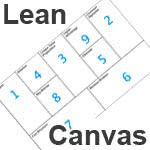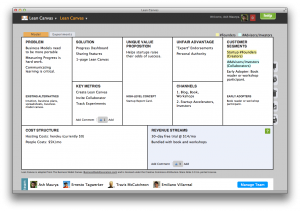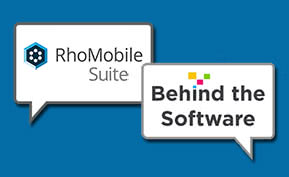Application Development
Lean Canvas: As if You Were Home 24×7 – The iDoor

The idea of Lean Canvas is to put what would go into the executive summary of a business case on one page and to forget about writing the rest of the business case. The justification is that writing a business case takes two to three months and CxOs normally only read the executive summary. So instead of spending 2 to 3 months, you spend hours or days and get it in front of customers to get feedback. With the feedback you can then refine your idea and create a Minimum Valuable Product in the same 2 to 3 months. So instead of having a nice paper report nobody reads, you can start earning money.
The Lean Canvas contains the major customer problems you want to solve. These customer problems need to be important (A painkiller, not a vitamin), shared by many and not have an easy workaround. Customers need to validate them before you start thinking about solutions. Customers are the ideal party to tell you about their problems but not necessarily the best to give you ideas about a solution. Think about Henry Ford’s words: “If I had asked what people wanted they would have said faster horses…” Most startups focus excessively on the solution and forget that they need to validate a lot more things. After the problem, the second most important part of the Lean Canvas is the customer segment and channel. Who do you want to offer a product to and how to do reach them. Also the unique value proposition is key. The other elements of the Lean Canvas are the unfair advantage [how can I avoid others to just copy my business?], key metrics (how can I measure success?) and last but not least the cost structure (what does it cost to acquire a customer, build a minimum valuable product, etc.?) and revenue streams (how much am I going to charge and what other revenue sources are there). You can create a Lean Canvas on paper or use a SaaS-version.
So far the theory, now let’s review an example…
-
- The Customer Problems
Door keys are a nuisance. You can lose them. You have to give copies to family and friends if you want them to go to your house if you are not there. Do you really want to give the cleaning lady or man a copy? Is my lock safe from burglars?
The mailman or delivery guy comes to my home but often packages do not fit my mailbox.
When people ring my bell, they know when I am not home. That is unsafe.
-
- So What Is The Solution?
My proposed solution is the iDoor. The iDoor is an intelligent door which you control remotely to decide who accesses, who delivers and who is shut-out. Via a camara and full-duplex audio system, you are able to see who is standing in front of your door and communicate with them. Your smartphone will be your remote door manager. Advanced models could have face recognition and share data with other intelligent doors in the neighbourhood, hence if you are sleeping a siesta and those annoying door to door vendors approach your door they will automatically hear a message to go away and your bell will not function. If a burglar is detected, then the police can be warned. If the postman has a big package then remotely you can open a compartment so they can store the package. If your family comes they can go into the house without problems. Your cleaning lady can as well, as long as it is her normal working hours and she comes alone.
-
- Unique Value Proposition?
As if you were home 24×7. Busy people will never miss an Amazon package again. Burglars will not know if you are in the garden or not home at all.
-
- Customer Segments?
Mid-high class house owners.
-
- Channels?
An existing door manufacturer that targets upper markets should be partnered with. An example could be Hörnmann.
-
- Unfair Advantage?
TBD.
-
- Key Metrics?
Door sales and door usage.
-
- Cost Structure?
A complete costing has to be done. TBD.
-
- Revenue Streams?
Door sales and door installation/maintenance services are the primary revenue stream. However door apps and selling anonymous aggregated data could be additional sources.
Summary
You can find a quick summary in the following slides as well as some details about the technology components. This example needs customer validation and several areas need quite some more work [e.g. cost, revenue, unfair advantage, etc.]. However I hope the idea is clear.
[This post originally appeared on Telruptive and is republished with permission.]







